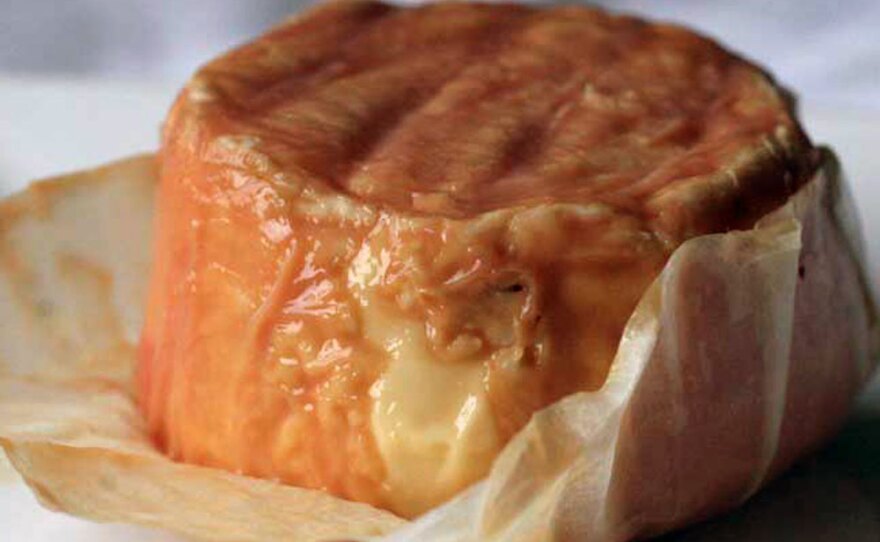Washed-rind cheeses melt like a dream and incorporate seamlessly into dishes. Their earthy funk adds flair to mild foods. ... These are cheeses that inspire cooks.
If you pass on cheeses based on their scent, you may miss some of the best. Even though washed-rind cheeses, with perfume described in wine as "barnyard," can be off-putting to many eaters, the cheeses with the funkiest smell often have the sweetest centers. This pungent genre of cheeses with orange, brownish or pink washed rinds are noted for their flavor.
Although some firm cheeses are in this category, the washed rinds that get the most attention are those with soft, often oozing centers. Cow's milk versions commonly available at stores or through mail order include Italy's Taleggio and the French Epoisses. Washed-rind cheeses are an emerging industry in the U.S. but are available — including Grayson from Meadow Creek in Virginia and Red Hawk from Cowgirl Creamery in California.

Washed-rind cheeses melt like a dream and incorporate seamlessly into dishes. Their earthy funk adds flair to mild foods, and as they cook, the silkier ones form a sauce that coats food in a film of smooth, creamy luxury. These are cheeses that inspire cooks.
They're called "washed-rind" because as they mature, their rinds are washed or rubbed with a brine, usually a blend of water and salt or alcohol. Like the traditional marc de Bourgogne blend used to wash down Epoisses, the brine encourages the growth of Brevibacterium linens. These good bacteria work to keep harmful bacteria at bay and to develop an earthy, meaty, sweet character in the cheese.
Thank a monk for this discovery.
During the Middle Ages, Trappist monks in Europe began rubbing the beer and spirits for which their establishments were celebrated on their cheeses to keep the rinds from cracking. They found that another result of moist brining was a full-bodied, sweet albeit stinky cheese that earned space on their plates during meat fasts.
Cheese makers keep the curds large so less water and whey drain, and the cheeses stay moist and tender. Once you've tried a washed-rind cheese, it's difficult — even for those with the most finicky of noses — to turn one down.
Because washed rinds were traditionally Trappist cheeses, it is not surprising that they pair well with beer. The monks who make these cheeses are also master brewers and would naturally want their two creations to taste good together. I like them best with Trappist beers, but they go well with Belgian beers in general, whose slight sweetness plays off the flavors in the washed rind's interior.
Pairing with wine is simple, too. Aromatic whites are generally the way to go. Off-dry Gewurztraminers, Rieslings and lightly oaked Viogniers work like Belgian beers to highlight the cheese's sweetness. Reds are harder because a washed rind's pungent nature demands attention and doesn't always play fair with red or black fruits and tannins. If determined to go red, aim for high-acidity wines with low oak, such as gamay, pinot noir, barbera and nebbiolo. If the cheese is European, it goes especially well with the wines of the region or neighboring areas. Epoisses loves pinot noirs and chardonnays from the Burgundy area where it grew up, for example.
So hold your nose if you must, but try not to judge a cheese by its odor. If it's too strong for you on its own, try easing into a good washed rind with a recipe that incorporates it into a classic dish.
Copyright 2023 NPR. To see more, visit https://www.npr.org. 9(MDAzMjM2NDYzMDEyMzc1Njk5NjAxNzY3OQ001))





